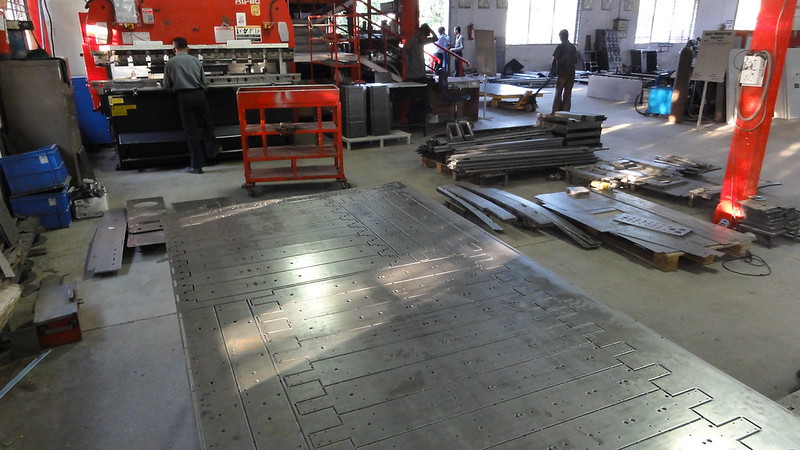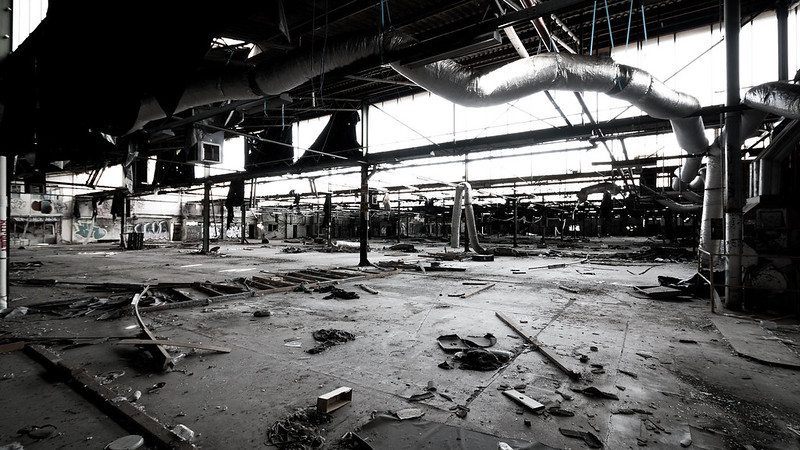Previously in this series, we’ve looked at designing for resilience and the concept of an industrial aftermarket for all things and 3D printed spares, as well as designing for installation, maintenance, human factors, and ruins. We’ve also seen to create both love and redundancy by making production more modular.
In that last post, I discussed how, by having simpler devices with fewer parts and materials, we can create simpler manufacturing setups and simplify the supply chain for these goods. We can then more easily port manufacturing from one country or city to another. Manufacturing sites can be scaled in a modular way as well. We can then also have a manufacturing site in the high street. There, we can customize our products for consumers and learn through working with them. We can offer limited and new items to test the waters, as well. As I’ve stated before this kind of custom setup will also make us more resilient. That love and redundancy will then lead to a number of other new developments related to commodities and customization.

We can reduce fashion risk by manufacturing what people actually like. We can also try out wilder ideas in one store tied to a specific manufacturing location before taking these ideas nationwide. In essence, we can de-risk ourselves partially and will know better what to make and in what numbers to make it.
Is the new Novo model of sunglasses not working nationwide? Then, quickly design the Novo Plus in your custom lab to see if a different design is more popular. Everyone rollerskating all of a sudden? Quickly make a trendy product compatible with rollerskating available. These things may de-risk your business, but, even if they do not, they help you gather intelligence and learning for your brand. Furthermore, they can serve as marketing tools to keep you relevant and keep the conversation going around your brand, even if you sell nothing.
I’ve often performed projects in which we just brainstorm 3D printed products in order to get attention for a company and produce them without intent to sell them. If we do end up selling them, we can always scale up production. If we sell them, but not enough to warrant full-scale production, then we will have created demand around something with limited availability. If no one wants our 3D print, then we just give it to an intern and try again. Either way, we win or loose a teeny tiny bit.

So in a bullets before cannonballs world, this will strengthen your mass production efforts by allowing you to inexpensively shoot those bullets with 3D printing. We can reduce the fashion risk of having unsold inventory and also reduce the risk of not having enough by experimenting with 3D prints. We can also include some low-volume injection molding, reaction injection molding, polymer tooling, or similar approaches to make one of something but also quickly switch to dozens of 3D printed parts and then hundreds of molded parts using 3D printed tooling. In this way we can make 1, 12, 500, 50,000 and 1,000,000 of something cost effectively.
By mastering technologies such as thermoforming, we can produce inexpensive one-offs. Molds made from polyurethane, latex, or other materials could be used to fabricate different numbers of series, as well. Desktop injection molding tools could also be used. In some cases, you might be able to scale from 500 to 5,000 and that could be the extent of that product line. Now, I’m not saying that this will work for everything but for many items, this could be a solution.

But there is another advantage, as well. By far the single biggest cause for company failure in 3D printing is issues with outsourcing. In desktop 3D printing, outsourcing failures have repeatedly caused some of the biggest players to collapse. In the industrial market, outsourcing has lead to quality problems and a reduction in the trust enjoyed by some players.
NASA often has complete copies of landers or bases made on Earth before embarking on space missions. These enable astronauts to perform training in an exact replica of the craft that they will be operating. Furthermore, if there is a crisis off-world, crew on the ground can help problem-solve by replicating the problem itself. They can also test out different solutions repeatedly to see where they lead.
By having one standard modular production facility, a business may be able to accomplish the same outcomes. You could send everyone to HQ for training and make sure that standards and practices are implemented across the globe. You can also improve and change aspects of your manufacturing setup there first to see how they will play out at other locations. Any kind of improvement could be validated at one spot before being rolled out globally.
What’s more, a production facility close to home could be used to trace failures or to plan out scenarios when things do go wrong. And, by developing your very own production knowledge, you can keep on top of the ball in terms of the manufacturing technology and the related knowledge that is required. And, in case of supply chain interruptions, your HQ manufacturing setup could work overtime to mitigate them. Yes, it will be expensive to keep a production unit in your home country, but by allowing you to more quickly mitigate supply chain risks, it may be more expensive not to.
Images by Andy, ILO Score, ILO, Fogarty Avenue.
Subscribe to Our Email Newsletter
Stay up-to-date on all the latest news from the 3D printing industry and receive information and offers from third party vendors.
You May Also Like
Printing Money Episode 17: Recent 3D Printing Deals, with Alex Kingsbury
Printing Money is back with Episode 17! Our host, NewCap Partners‘ Danny Piper, is joined by Alex Kingsbury for this episode, so you can prepare yourself for smart coverage laced...
Insights from Cantor Fitzgerald on AM’s Q1 2024 Landscape
A recent survey by Cantor Fitzgerald sheds light on the persistent challenges within the additive manufacturing (AM) industry in the first quarter of 2024. Based on responses from 38 industry...
3D Printing Financials: Xometry’s Scaling up and Strong Start to 2024
Xometry (Nasdaq: XMTR) kicked off 2024 with strong results, boosting its marketplace and technology to new heights. Both revenue and gross margin soared, fueled by an expanding global network of...
3D Printing Financials: Desktop Metal Targets Recovery Amid Net Losses and Revenue Downturn
Despite facing a decline in revenue and the persistent challenges of a tight economic climate, Desktop Metal (NYSE: DM) is making strides toward operational efficiency. The first quarter of 2024...
































